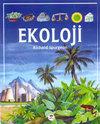在水培系统中利用狐尾藻去除重金属
Q3 Environmental Science
引用次数: 7
摘要
研究了水培条件下黄斑霉对重金属的积累能力。在一个由曝气、光照和水培系统组成的模型水生环境中,在不同种类和浓度的霍格兰E-培养基中制备重金属溶液中生长21天。在研究开始和结束时观察到的任何视觉变化都是每天记录的。实验结束时,测定植物生物量中重金属的浓度。对重金属离子具有良好的耐受性,并能在研究浓度范围内生长。重金属在各混合溶液和单个水溶液中的富集顺序为Pb+2> Cu+ 2> Cd+ 2> Zn+2。然而,黄杨积累了大量的Pb+2离子,但新芽仍在继续生长。这可能是一种指示,表明斑孢霉可能是Pb +2离子的超蓄积体。M. verticillatum在金属过程中也表现出质子分泌本文章由计算机程序翻译,如有差异,请以英文原文为准。
Removal of Heavy Metals Using Myriophyllum verticillatum (Whorl-Leaf Watermilfoil) in a Hydroponic System
The heavy metal accumulation capacity of M. verticillatum in a hydroponic system was investigated in this study. M. verticillatum was grown in a model aquatic setup consisting of aeration, lighting, and hydroponic systems for 21 days in different kinds and concentrations of heavy metal solutions prepared in a Hoagland E- Medium. Any visual changes observed in individual M. verticillatum plants at the onset and end of the study were noted daily. At the end of the experiments, the heavy metal concentrations in the plant biomass were determined. M. verticillatum tolerated the heavy metal ions very well and was also able to grow within the studied concentration range. The heavy metal accumulation followed the order of Pb+2> Cu+2 > Cd+2 > Zn+2 in all mixed and individual aqueous solutions. However, M. verticillatum accumulated a large amount of Pb+2 ions, but new shoots also continued to grow. This may be an indicator that M. verticillatum may be a hyperaccumulator for Pb +2 ions. M. verticillatum also exhibited proton secretion during the metal
求助全文
通过发布文献求助,成功后即可免费获取论文全文。
去求助
来源期刊

Ekoloji
环境科学-生态学
CiteScore
1.10
自引率
0.00%
发文量
0
审稿时长
>12 weeks
期刊介绍:
Cessation. Ekoloji is an international journal that focuses on papers that report results from original research on all disciplines engaged in the field of environmental research. We welcome articles that cover the entire spectrum of environmental problems and environmental pollutants, whether chemical, biological or physical. Its coverage extends to all environmentally related issues: air and water pollution, solid waste, noise, recycling, natural resources, ecology and environmental protection. It includes articles on basic and applied environmental pollution research, including environmental engineering and environmental health. All types of pollution are covered, including atmospheric pollutants, detergents, fertilizers, industrial effluents, metals, mining wastes, oil, pesticides, plastics, radioactive materials and sewage. It also includes research papers on ecological and environmental issues such as climate change, biodiversity. The primary criteria for publication are scientific quality and ecological/environmental significance.
The journal will be read and contributed to by biologists, applied ecologists, environmental scientists, natural resource specialists, environmental engineers, environmental health specialists, agro-ecologists, veterinaries, agricultural engineers, landscape planners and designers. The journal welcomes full "research papers" and short "research notes", only in the English language.
 求助内容:
求助内容: 应助结果提醒方式:
应助结果提醒方式:


